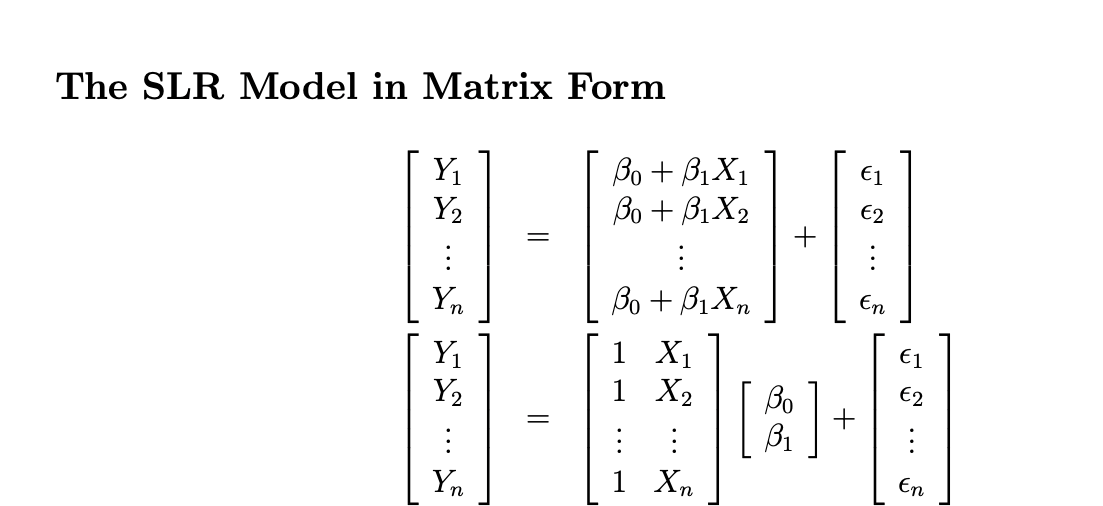class: center, middle, inverse, title-slide # STA 326 2.0 Programming and Data Analysis with R ## Lesson 4: Writing Functions in R ### Dr Thiyanga Talagala ### 2020-03-03 --- background-image: url('dengue.jpg') background-position: center background-size: contain --- # Load the mozzie dataset ```r library(mozzie) data(mozzie) head(mozzie, 2) ``` ``` ID Year Week Colombo Gampaha Kalutara Kandy Matale Nuwara Eliya Galle 1 1 2008 52 15 7 1 11 4 0 0 2 2 2009 1 44 23 5 16 21 2 0 Hambantota Matara Jaffna Kilinochchi Mannar Vavuniya Mulative Batticalo 1 6 22 0 0 8 0 0 1 2 5 18 1 0 0 0 0 0 Ampara Trincomalee Kurunagala Puttalam Anuradhapura Polonnaruwa Badulla 1 0 0 2 1 2 0 1 2 1 1 10 5 0 0 1 Monaragala Ratnapura Kegalle 1 1 2 16 2 0 1 25 ``` -- > Use Min-Max transformation to rescale all the districts variables onto 0-1 range. > Min-Max transformation is `\(\frac{x_i-min(x)}{max(x)-min(x)}\)` where `\(x=(x_1, x_2, ...x_n)\)`. --- ## Min-Max transformation on `mozzie` ```r # Colombo district minmax.colombo <- (mozzie$Colombo - min(mozzie$Colombo, na.rm = TRUE)) / (max(mozzie$Colombo, na.rm=TRUE) - min(mozzie$Colombo, na.rm=TRUE)) head(minmax.colombo) ``` ``` [1] 0.03157895 0.09263158 0.08210526 0.12000000 0.11157895 0.06105263 ``` -- ```r # Gampaha district minmax.gampaha <- (mozzie$Gampaha - min(mozzie$Gampaha, na.rm = TRUE)) / (max(mozzie$Gampaha, na.rm = TRUE) - min(mozzie$Gampaha, na.rm = TRUE)) head(minmax.gampaha) ``` ``` [1] 0.02734375 0.08984375 0.07421875 0.08984375 0.09375000 0.06640625 ``` -- ```r # Kalutara district minmax.kalutara <- (mozzie$Gampaha - min(mozzie$Kalutara, na.rm = TRUE)) / (max(mozzie$Kalutara, na.rm = TRUE) - min(mozzie$Kalutara, na.rm = TRUE)) head(minmax.kalutara) ``` ``` [1] 0.09333333 0.30666667 0.25333333 0.30666667 0.32000000 0.22666667 ``` -- > Very easily made errors when copying-and-pasting the codes. > A mistake copied becomes a mistake repeated. --- ## When should you write a function? - Whenever you need to copy and paste a block of codes many times. - A function is a reusable block of programming code designed to do a specific task. - If you don't find a suitable built-in function to serve your purpose, you can write your own function. - To share your work with others. --- # Writing a function ## Step 1: Function name ```r rescale_minmax ``` -- ## Step 2: Assign your function to the name ```r rescale_minmax <- ``` -- ## Step 3: Tell R that you are writing a function ```r_ rescale_minmax <- function() # Arguments/inputs should be defined inside () ``` -- ## Step 4: Curly braces define the start and the end of your work ```r rescale_minmax <- function(){ # Task # output } ``` --- ## Step 5: Function inputs, task and outputs **Find all the inputs that correspond to a given function output?** ```r # Colombo district (mozzie$Colombo - min(mozzie$Colombo, na.rm = TRUE)) / (max(mozzie$Colombo, na.rm=TRUE) - min(mozzie$Colombo, na.rm=TRUE)) ``` -- **Re-write the code with general names** ```r x <- mozzie$Colombo (x - min(x, na.rm = TRUE)) / (max(x, na.rm=TRUE) - min(x, na.rm=TRUE)) ``` -- **Remove duplication/ Make your code efficient and readable** ```r rng <- range(x, na.rm = TRUE) rng ``` ``` [1] 0 475 ``` ```r rng <- range(x, na.rm = TRUE) (x - rng[1]) / (rng[2] - rng[1]) ``` --- # Step 6: Complete your function ## Type A ```r rescale_minmax <- function(x){ rng <- range(x, na.rm = TRUE) (x - rng[1]) / (rng[2] - rng[1]) } ``` -- ## Type B ```r rescale_minmax <- function(x){ rng <- range(x, na.rm = TRUE) out.rescaled <- (x - rng[1]) / (rng[2] - rng[1]) out.rescaled } ``` -- ## Type C ```r rescale_minmax <- function(x){ rng <- range(x, na.rm = TRUE) out.rescaled <- (x - rng[1]) / (rng[2] - rng[1]) return(out.rescaled) } ``` > In this situation Type A is the best. --- # Step 7: Check your function with a few different inputs ```r rescale_minmax <- function(x){ rng <- range(x, na.rm = TRUE) (x - rng[1]) / (rng[2] - rng[1]) } ``` -- ```r rescale_minmax(c(1, 200, 250, 80, NA)) ``` ``` [1] 0.0000000 0.7991968 1.0000000 0.3172691 NA ``` ## Back to our original example ```r minmax.colombo <- rescale_minmax(mozzie$Colombo) head(minmax.colombo) ``` ``` [1] 0.03157895 0.09263158 0.08210526 0.12000000 0.11157895 0.06105263 ``` -- ```r minmax.gampaha <- rescale_minmax(mozzie$Gampaha) minmax.kalutara <- rescale_minmax(mozzie$Kalutara) ``` --- # Move forward: When the requirements changes ```r new.data.col <- c(400, 500, 350, 250, 60, 70, Inf) rescale_minmax(new.data.col) ``` ``` [1] 0 0 0 0 0 0 NaN ``` -- ## Fix the code ```r rescale_minmax <- function(x){ * rng <- range(x, na.rm = TRUE, finite=TRUE) (x - rng[1]) / (rng[2] - rng[1]) } ``` ```r new.data.col <- c(400, 500, 350, 250, 60, 70, Inf) rescale_minmax(new.data.col) ``` ``` [1] 0.77272727 1.00000000 0.65909091 0.43181818 0.00000000 0.02272727 Inf ``` --- class: duke-orange, center, middle # Your turn --- Rewrite `rescale_minmax` so that `-Inf` is set to 0, and `Inf` is mapped to 1. <div class="countdown" id="timer_610a5c3d" style="right:0;bottom:0;" data-warnwhen="0"> <code class="countdown-time"><span class="countdown-digits minutes">04</span><span class="countdown-digits colon">:</span><span class="countdown-digits seconds">00</span></code> </div> --- class: duke-orange, center, middle # Your turn --- R for Data Science - Exercise 19.2.1, Question 3 <iframe src="https://r4ds.had.co.nz/functions.html" width="100%" height="400px"></iframe> <div class="countdown" id="timer_610a5cf1" style="right:0;bottom:0;" data-warnwhen="0"> <code class="countdown-time"><span class="countdown-digits minutes">04</span><span class="countdown-digits colon">:</span><span class="countdown-digits seconds">00</span></code> </div> --- class: duke-orange, center, middle # Your turn --- R for Data Science - Exercise 19.2.1, Question 4 <iframe src="https://r4ds.had.co.nz/functions.html" width="100%" height="400px"></iframe> <div class="countdown" id="timer_610a5cc8" style="right:0;bottom:0;" data-warnwhen="0"> <code class="countdown-time"><span class="countdown-digits minutes">10</span><span class="countdown-digits colon">:</span><span class="countdown-digits seconds">00</span></code> </div> --- background-image: url('laptop.jpg') background-position: center background-size: cover .content-box-yellow[ # Functions are for humans and computers - Descriptive names for variables. - Comment your code. ] --- class: duke-orange, center, middle # Your turn --- Write your own function to calculate parameter estimates of simple linear regression model. Help: `$$\hat{\beta}=(X^TX)^{-1}X^TY$$`  <div class="countdown" id="timer_610a5c7f" style="right:0;bottom:0;" data-warnwhen="0"> <code class="countdown-time"><span class="countdown-digits minutes">05</span><span class="countdown-digits colon">:</span><span class="countdown-digits seconds">00</span></code> </div> --- Write a function to calculate confidence intervals for mean. `$$\bar{x} \pm t_{\alpha/2, (n-1)}\frac{s}{\sqrt(n)}$$` <div class="countdown" id="timer_610a5ac0" style="right:0;bottom:0;" data-warnwhen="0"> <code class="countdown-time"><span class="countdown-digits minutes">10</span><span class="countdown-digits colon">:</span><span class="countdown-digits seconds">00</span></code> </div> --- ## Function arguments ```r cal_mean_ci <- function(x, conf){ len.x <- length(x) se <- sd(x) / sqrt(len.x) alpha <- 1-conf mean(x) + se * qt(c(alpha / 2, 1 - alpha / 2), df = len.x-1) } data <- c(165, 170, 175, 180, 185) cal_mean_ci(data, 0.95) ``` ``` [1] 165.1838 184.8162 ``` -- ## Function with default values ```r cal_mean_ci <- function(x, conf = 0.95){ len.x <- length(x) se <- sd(x) / sqrt(len.x) alpha <- 1-conf mean(x) + se * qt(c(alpha / 2, 1 - alpha / 2), df = len.x-1) } cal_mean_ci(data) ``` ``` [1] 165.1838 184.8162 ``` ```r cal_mean_ci(data, 0.99) ``` ``` [1] 158.7221 191.2779 ``` --- # Conditional executions - Control the flow of the execution. - Common ones include: - if, else - for - while - repeat - break - next - switch --- # If ```r if (condition) { # do something } else { # do something else } ``` Example ```r test_even_odd <- function(x){ if (x %% 2 == 0){ print("even number") } else { print("odd number") } } ``` ```r test_even_odd(5) ``` ``` [1] "odd number" ``` ```r test_even_odd(6) ``` ``` [1] "even number" ``` --- # ifelse: vectorization with ifelse ```r ifelse(condition, if TRUE the output, if FALSE the output) ``` Example ```r test_even_odd_v2 <- function(x){ ifelse(x %% 2 == 0, "even number", "odd number") } test_even_odd_v2(5) ``` ``` FALSE [1] "odd number" ``` ```r test_even_odd_v2(c(1,6)) ``` ``` FALSE [1] "odd number" "even number" ``` --- # Difference between `if, else` and `ifelse` .pull-left[ ```r test_even_odd <- function(x){ if (x %% 2 == 0) { print("even number") } else { print("odd number") } } test_even_odd(5) ``` ``` FALSE [1] "odd number" ``` ```r test_even_odd(c(1,6)) ``` ``` FALSE Warning in if (x%%2 == 0) {: the condition has length > 1 and only the first FALSE element will be used ``` ``` FALSE [1] "odd number" ``` ] .pull-right[ ```r test_even_odd_v2 <- function(x){ ifelse (x %% 2 == 0, "even number", "odd number") } test_even_odd_v2(5) ``` ``` FALSE [1] "odd number" ``` ```r test_even_odd_v2(c(1,6)) ``` ``` FALSE [1] "odd number" "even number" ``` ] --- # Nested if-else - Multiple conditions ```r grade_marks <- function(marks){ if (marks < 20) { "D" } else if (marks <= 50) { "C" } else if (marks <= 60) { "B" } else { "A" } } grade_marks(75) ``` ``` [1] "A" ``` --- class: duke-orange, center, middle # Your turn --- R for Data Science-Exercises 9.4.4 - Q2 <iframe src="https://r4ds.had.co.nz/functions.html" width="100%" height="400px"></iframe> Help: `lubridate::now()` and `lubridate::hour()` <div class="countdown" id="timer_610a5c83" style="right:0;bottom:0;" data-warnwhen="0"> <code class="countdown-time"><span class="countdown-digits minutes">10</span><span class="countdown-digits colon">:</span><span class="countdown-digits seconds">00</span></code> </div> --- # `for` loop - execute a block of code a specific number of times or until the end of a sequence. ```r for (i in 1:5) { print(i*100) } ``` ``` [1] 100 [1] 200 [1] 300 [1] 400 [1] 500 ``` --- ```r continents <- c("Asia", "EU", "AUS", "NA", "SA", "Africa") for (i in continents) { print(continents[i]) } for (i in 1:4) { print(continents[i]) } for (i in seq(continents)) { print(continents[i]) } for (i in 1:4) print(continents[i]) ``` ``` ## [1] "Asia" ## [1] "EU" ## [1] "AUS" ## [1] "NA" ## [1] "SA" ## [1] "Africa" ``` --- # Nested loops ```r mat <- matrix(1:6, ncol=2) mat ``` ``` [,1] [,2] [1,] 1 4 [2,] 2 5 [3,] 3 6 ``` ```r for (i in 1:3) { for (j in 1:2) { print(mat[i, j]) } } ``` ``` [1] 1 [1] 4 [1] 2 [1] 5 [1] 3 [1] 6 ``` --- class: duke-orange, center, middle # Your turn --- Write a function to count the number of even numbers in a vector. <div class="countdown" id="timer_610a5bd3" style="right:0;bottom:0;" data-warnwhen="0"> <code class="countdown-time"><span class="countdown-digits minutes">08</span><span class="countdown-digits colon">:</span><span class="countdown-digits seconds">00</span></code> </div> --- # While ```r i <- 1 # initial value while (i < 10) { print(i) i <- i + 1 # increment } ``` ``` [1] 1 [1] 2 [1] 3 [1] 4 [1] 5 [1] 6 [1] 7 [1] 8 [1] 9 ``` --- class: duke-orange, center, middle # Your turn --- ## Fibonacci Sequence Print the first `n` numbers of the Fibonacci Sequence. 0, 1, 1, 2, 3, 5, 8....   --- # Repeat and break - Iterate over a block of code multiple number of times. - No condition check in repeat loop to exit the loop. - The only way to exit a repeat loop is to call break. .pull-left[ Example 1 ```r x <- 5 repeat { print(x) x = x+1 if (x == 10){ break } } ``` ``` [1] 5 [1] 6 [1] 7 [1] 8 [1] 9 ``` ] -- .pull-right[ Example 2 ```r set.seed(1) repeat { x<-runif(1, 5, 10) print(x) if(x < 6.1){ break } } ``` ``` [1] 6.327543 [1] 6.860619 [1] 7.864267 [1] 9.541039 [1] 6.00841 ``` ] --- # Next ```r for(i in 1:10) { if(i <= 5) { next # Skip the first 5 iterations } print(i) } ``` ``` [1] 6 [1] 7 [1] 8 [1] 9 [1] 10 ``` --- # switch When you want a function to do different things in different circumstances, then the switch function can be useful. ```r feelings <- c("sad", "afraid") for (i in feelings){ print( switch(i, happy = "I am glad you are happy", afraid = "There is nothing to fear", sad = "Cheer up", angry = "Calm down now" )) } ``` ``` [1] "Cheer up" [1] "There is nothing to fear" ``` --- class: center, middle Slides available at: hellor.netlify.com All rights reserved by [Thiyanga S. Talagala](https://thiyanga.netlify.com/)